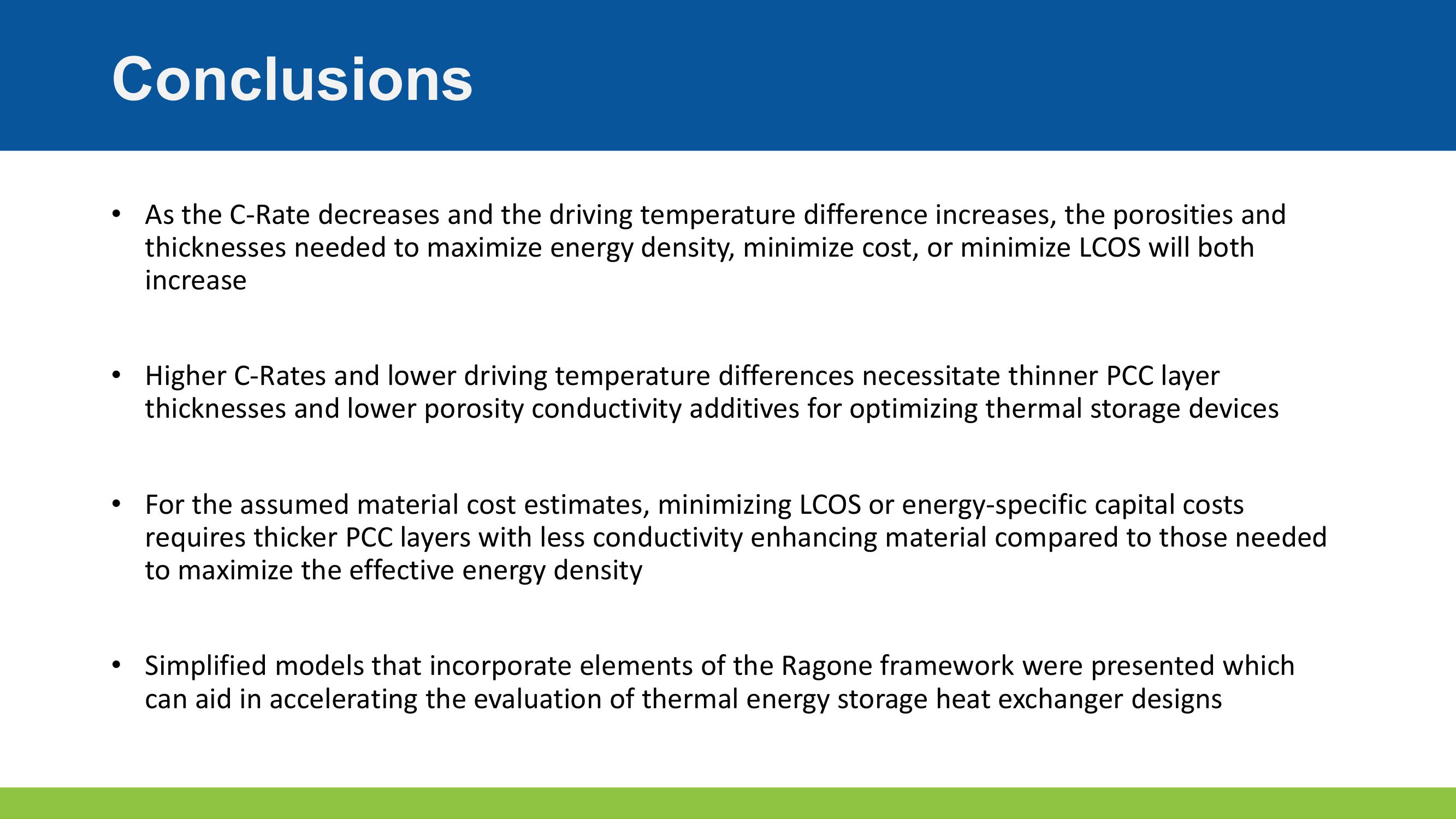Optimizing Design and Controls for Thermal Energy Storage
Conclusions
●
As the C-Rate decreases and the driving temperature difference increases, the porosities and
thicknesses needed to maximize energy density, minimize cost, or minimize LCOS will both
increase
·
Higher C-Rates and lower driving temperature differences necessitate thinner PCC layer
thicknesses and lower porosity conductivity additives for optimizing thermal storage devices
For the assumed material cost estimates, minimizing LCOS or energy-specific capital costs
requires thicker PCC layers with less conductivity enhancing material compared to those needed
to maximize the effective energy density
Simplified models that incorporate elements of the Ragone framework were presented which
can aid in accelerating the evaluation of thermal energy storage heat exchanger designsView entire presentation